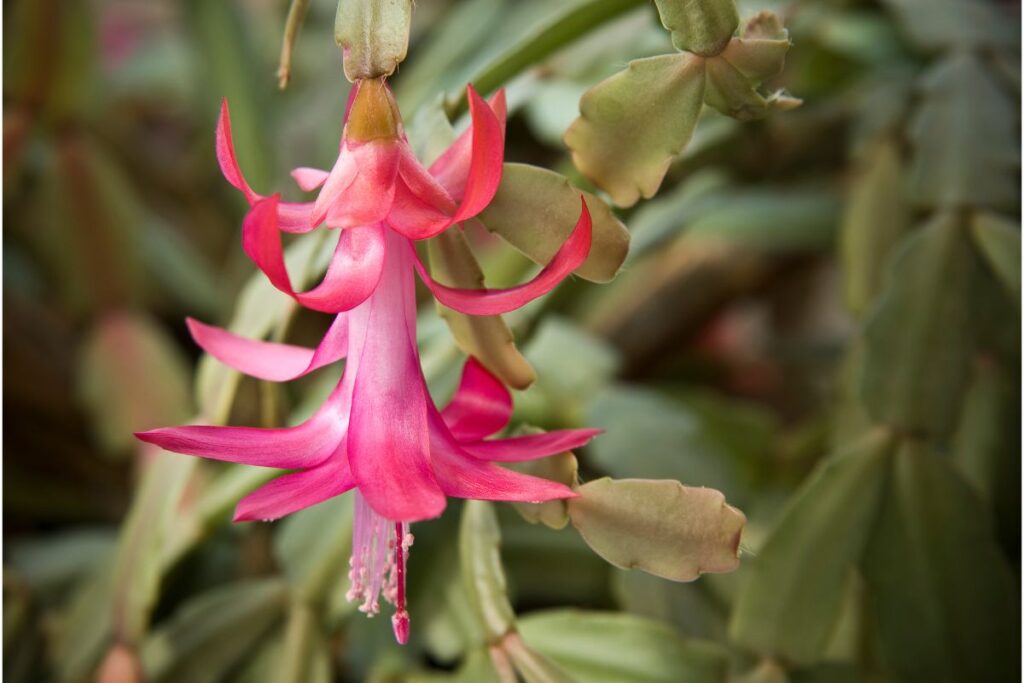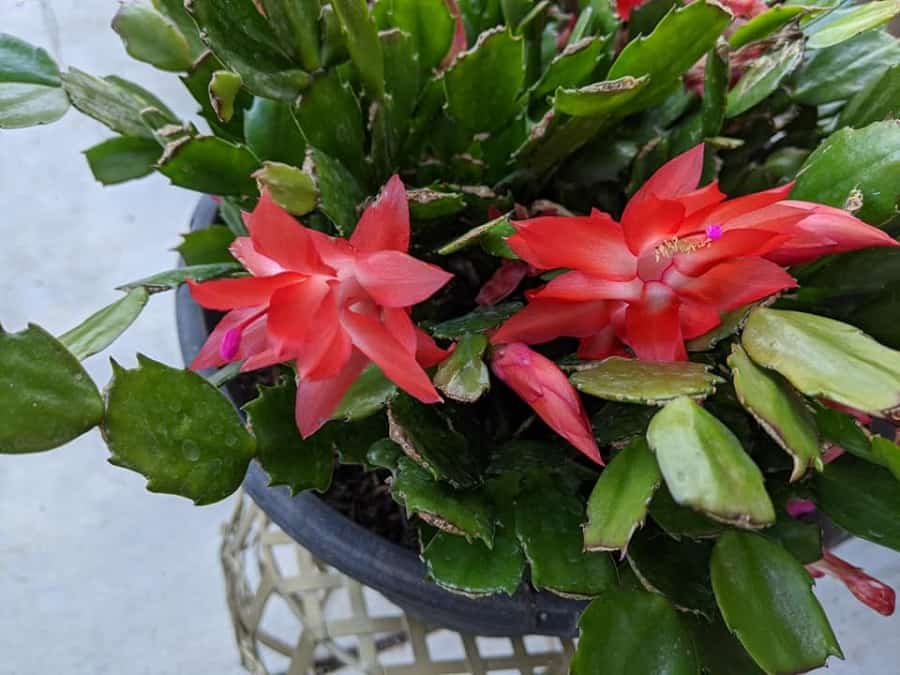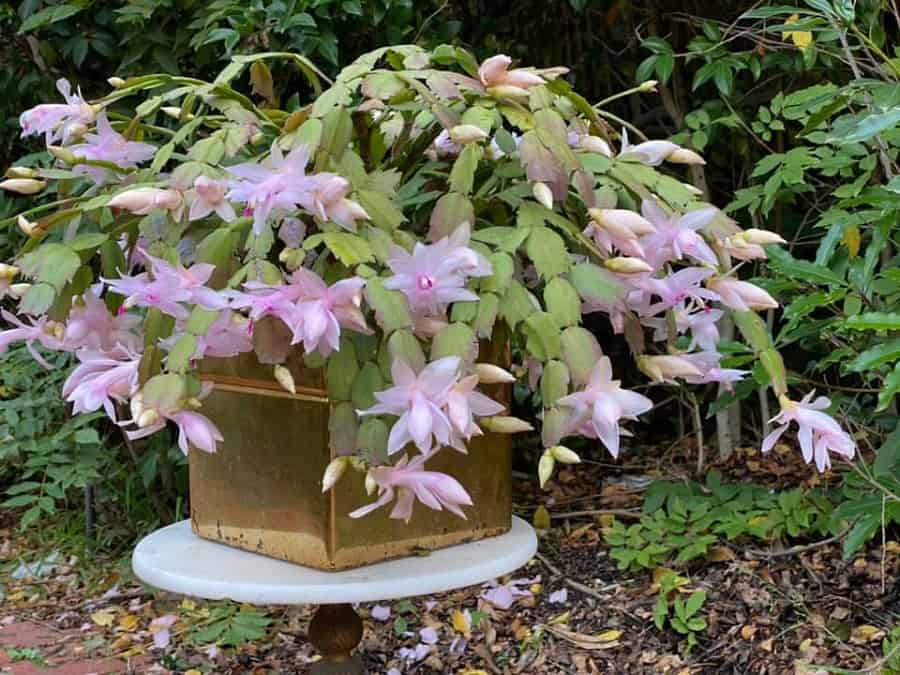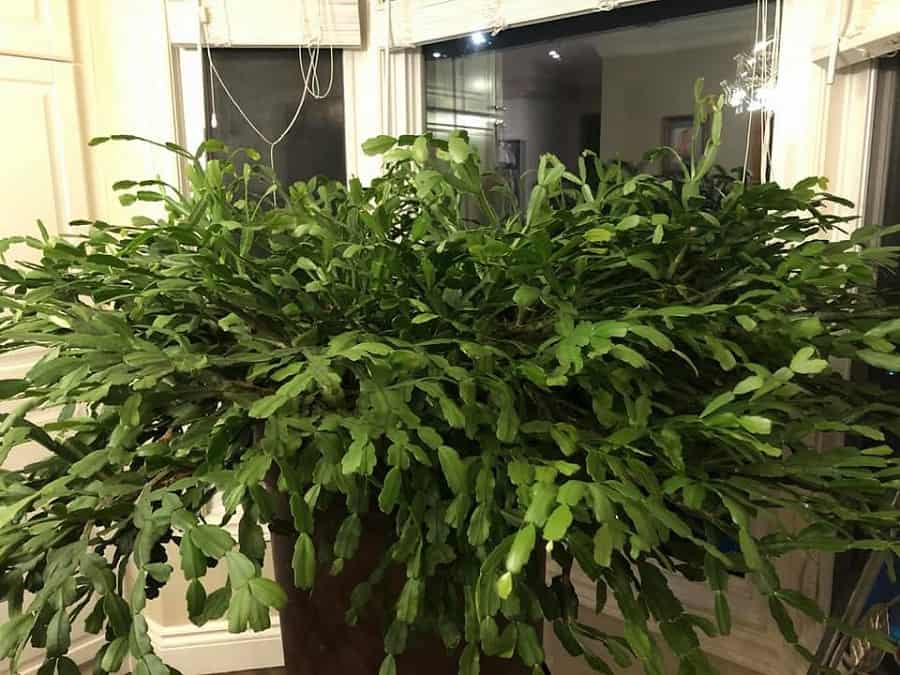The Science Behind Christmas Cactus Leaf Loss
Did you know that the Christmas cactus is not your typical desert cactus? Unlike its prickly relatives, this unique plant actually comes from the lush rainforests of Brazil. With its beautiful flowers in shades of pink, red, purple, or peach, it has become a favorite among houseplant enthusiasts. The best part? It can live for over 50 years and is relatively low-maintenance.
But what happens when you start noticing leaves falling off your beloved Christmas cactus? Don’t fret, because it’s actually quite common. When the growing conditions aren’t just right, your cactus might start shedding its leaves (or stems) and even its buds. It’s a sign that something isn’t quite perfect.
If you’ve ever wondered, “Why is my Christmas cactus falling apart?”—we’ve got you covered. In this article, we’ll dive into the world of Christmas cacti to explore the possible reasons behind this leafy mystery, helping you get your plant back on track.

Contents
Why is My Christmas Cactus Dropping Leaves?
It can be concerning to see your Christmas cactus losing leaves, but there are reasons behind it.
1. Water Worries
If you notice your Christmas cactus leaves falling off, it may be due to improper watering. Overwatering is a top mistake that owners make. While these cacti need more water than desert cacti, too much of it can cause the plant to rot and lead to leaf drop. On the other hand, not giving enough water can be harmful too. The best way is to water sparingly, about once a week, and let the top inch of soil dry before watering again. Make sure the water drains out of the pot and avoid letting the roots sit in water.

2. Soil Struggles
If you spot your Christmas cactus dropping leaves, the soil might be the problem. If it’s too dense or compacted, water doesn’t drain properly, which can lead to flooding and leaf drop. These cacti like well-drained soil, similar to succulents. If your soil isn’t doing the job, it’s a good idea to repot the cactus using a mix of potting soil, peat moss, and coarse sand or perlite. Use a pot with drainage holes and repot every three years.

3. Temperature Tango
The temperature can also affect your Christmas cactus. If the leaves are falling off, it could be because it’s too hot or too cold. Generally, these cacti prefer temperatures between 70-80°F (21-27°C) in spring and summer, and 60-68°F (15-20°C) in fall and winter. Avoid extreme temperatures, especially above 90°F (32°C). Sudden changes in temperature, like moving the cactus indoors, can lead to leaf drop too. Keep it away from drafts and heat sources.

4. Light Love
Christmas cacti enjoy light shade during their growing season and bright light in winter. They thrive in indirect sunlight but can be damaged by intense light, especially in summer. A sudden change in light intensity can also cause leaf and bud drop. To encourage blooming during the holiday season, provide 14 hours of darkness every day for six weeks, starting in mid-September.
Still Seeing Leaves Fall?
If your Christmas cactus continues to drop leaves, don’t worry! These plants are easy to propagate. If the fallen leaves (stems) are healthy and the cactus isn’t suffering from root rot, you can plant them in a new container. They might take root and grow into new plants, giving you a fresh start!
How Do I Make My Christmas Cactus Bushier?
If you’re looking to make your Christmas cactus bushier, there are a few things you can do:
- Prune your plant: Pruning your Christmas cactus can encourage it to branch out and become bushier. Use clean, sharp scissors or pruning shears to cut off a few segments from the ends of each stem. This will promote new growth and help your plant become more compact.
- Provide proper lighting: Christmas cacti need bright, indirect light to grow well. If your plant isn’t getting enough light, it may become leggy and thin. Move it to a brighter spot, but avoid direct sunlight, which can scorch the leaves.
- Adjust watering and fertilization: Overwatering or underwatering can cause your Christmas cactus to become weak and spindly. Make sure you’re watering your plant only when the soil is dry to the touch. Additionally, fertilize your plant every 2-3 weeks during the growing season (spring and summer) with a balanced fertilizer to encourage healthy growth.
- Repot your plant: If your Christmas cactus has become too big for its pot, it may start to look lanky and leggy. Repotting your plant into a slightly larger pot with fresh soil can help it grow fuller and bushier. Be sure to use a well-draining soil mix and water your plant thoroughly after repotting.
By following these tips, you can help your Christmas cactus become fuller, bushier, and more attractive.

I love the idea of watering with ice cubes as the tendency is to overwater…..with love!
After 4 years of intense blooming, I noticed a few leaves getting soft and limp and falling off, with the rest of the plant appearing healthy. Most likely it is from too much water. Thanks for all of your wonderful tips, I will take them to heart. Lori Kaufmann